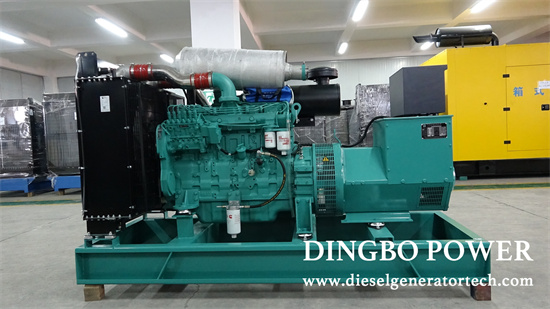Heating during operation is a common malfunction of the brushes and collector rings of Cummins diesel generator sets, which can affect the normal start-up and operation of Cummins diesel generator sets. There are three types of reasons for heating faults of brushes and collector rings. Below, Dingbo Power Generation Equipment will conduct a detailed analysis.

Poor ventilation
Poor ventilation is mainly due to blocked cooling air ducts, blocked ventilation channels and holes on the surface of the collector ring, and decreased air volume of the circulating fan. Especially when the surface temperature of the collector ring is too high during operation, the wear of the brushes increases, and the accumulation of carbon powder increases, which may block the heat dissipation channel on the surface of the collector ring.
Excessive or uneven distribution of contact resistance
The collector ring and brush conduct excitation current through sliding contact with each other, with approximately ten brushes distributed on each collector ring. Due to differences in contact resistance and current distribution, uneven heating can occur. The reasons include: the contact resistance between the brush and the slip ring surface, the contact resistance between the brush and the brush braid, and the excessive contact resistance between the brush braid and the brush holder lead; Uneven or unsatisfactory brush pressure; Excessive contact resistance between the collector ring and the rotor lead; The brush material is poor, the conductivity is poor, and the model used does not meet the requirements.
Mechanical and friction
Most of the overheating faults of the collector ring and brush are caused by mechanical and friction reasons. If the excitation is not applied when the generator is started, it is already found that the collector ring and brush are overheating, or if the temperature is too high during operation, and a few brushes are pulled out, the temperature actually decreases. It can be basically confirmed that it is caused by mechanical and friction reasons. The reasons include: poor grinding of the brush contact surface or excessive replacement of brushes during operation; The contact surface between the brush and the collector ring is too small; The electric brush sways or gets stuck in the brush box; The gap between the brush holder and the collector ring surface is too large.
Reminder: In order to reduce the incidence of brush and collector ring failures in Cummins diesel generator sets, original accessories should be selected when replacing brushes and brush holders. During the production process, maintenance and management of the brushes and collector ring in Cummins diesel generating sets should be strengthened, and the number of brushes to be replaced should be controlled.
Guangxi Dingbo Power Equipment Manufacturing Co.,Ltd is an early professional manufacturer of generators and diesel generator sets in China. The company has first-class national-level large-scale production and load testing equipment. Provide users with long-term diesel generator set sales, leasing, technical consultation, commissioning, maintenance, training services and generator set trusteeship business. If you would like to get more information welcome to contact us via sales@dieselgeneratortech.com.
Comments
Post a Comment